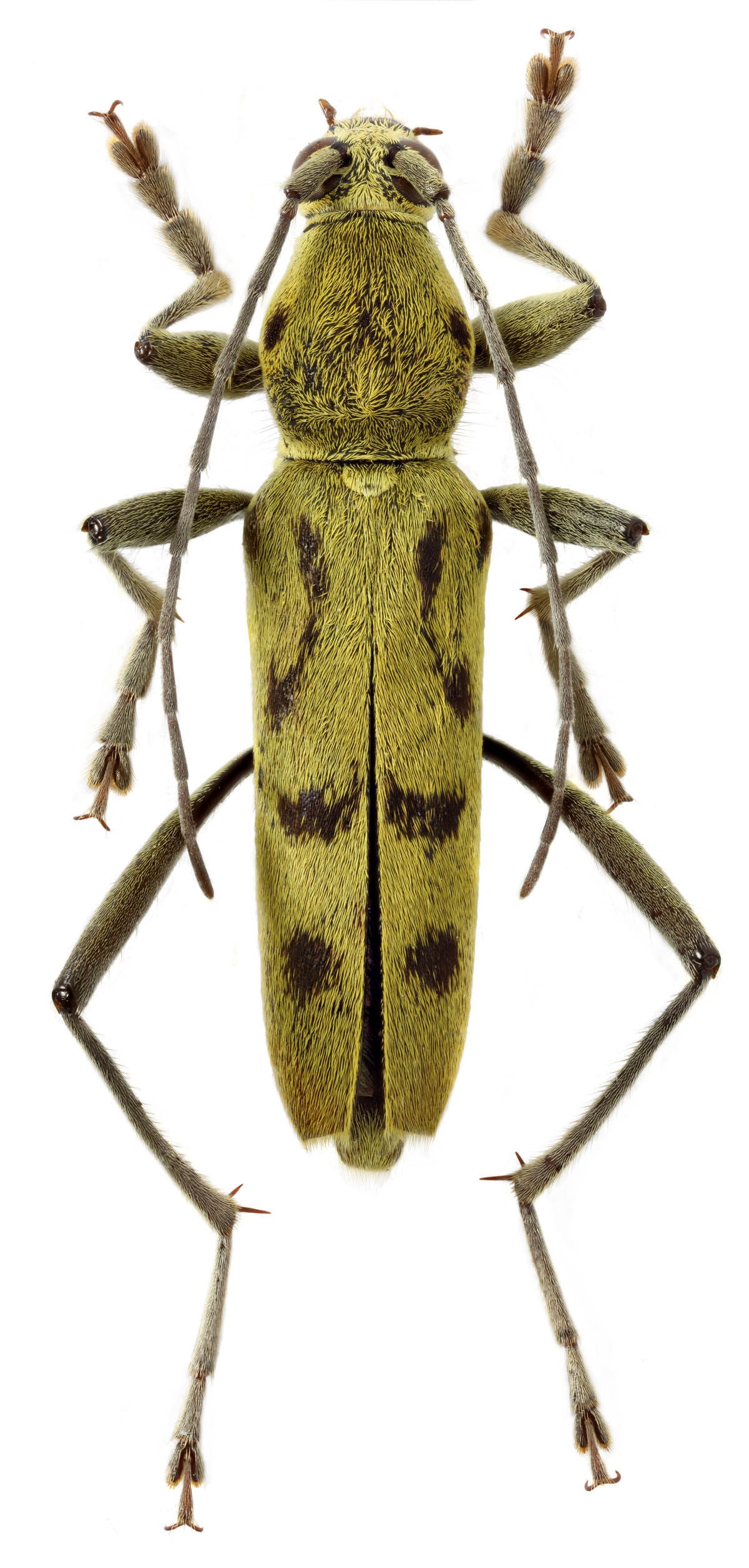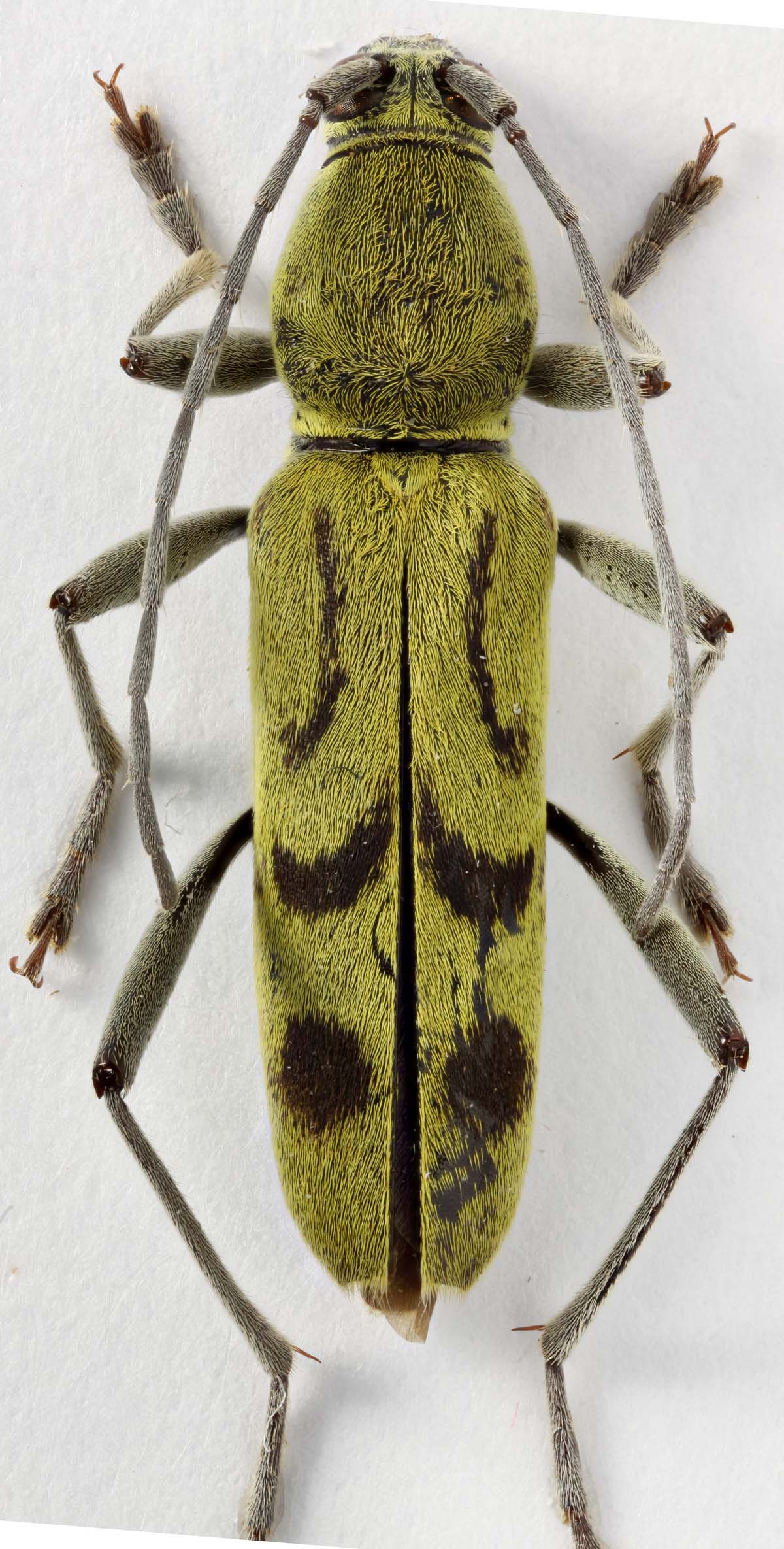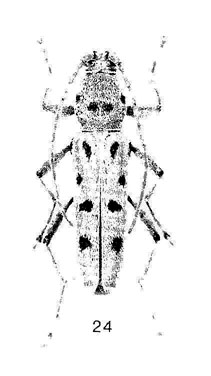| Author |
 Topic Topic  |
|
|
Max
Member Rosalia
  
Russia
713 Posts |
 Posted - 25/05/2011 : 20:02:51 Posted - 25/05/2011 : 20:02:51



|

Hi, help my, please, with determination, if it possible.
Chlorophorus, evidently, but no other ideas of me...
C Vietnam, Lam Dong prov., nat. park Bi Dup - Nui Ba,
14 mm
|
|
|
Francesco
Forum Admin
    
Luxembourg
9420 Posts |
 Posted - 25/05/2011 : 20:37:34 Posted - 25/05/2011 : 20:37:34




|
I have inserted an apparently identical female here, which I had identified as C. socius Gahan 1906. My specimen comes from Myanmar, near to the typical locality.
Gressitt & Rondon (1970) synonymised it with C. arciferus (Chevrolat, 1863), a species recorded from Laos as well. |
 |
|
|
Xaurus
Member Rosenbergia
   
Germany
1907 Posts |
 Posted - 15/03/2014 : 16:22:52 Posted - 15/03/2014 : 16:22:52



|
I capture an old posting, after examine some of my spms from N-Vietnam.
Dear Max, I think yours and my spms belong to C. insidiosus Holzschuh, 1986.
In this group of very difficult species you should examine the male genitals, morphological features for differentiation are not easy to see without good material in comparison. Notice there are spms with black line and suchlike without any drawings at the elytral surface.
According Holzschuh the sps C. arcocarpi, intericus, socius (spec. prop.) and sappho have keels at the inner side of meso- and metatibiae. Can you check your spms, Max ?
Occasionally I'll figure the male genitals for some sps of this really not easy group. |
 |
|
|
Max
Member Rosalia
  
Russia
713 Posts |
 Posted - 15/03/2014 : 21:53:14 Posted - 15/03/2014 : 21:53:14



|
Dear Andreas, depicted beetle have the thin keels at the inner side of meso- and metaFEMUR, not tibia..
In my Vietnamese material there's 3 other exemplars of this group (two different species, I think) and two beetles is very similar to C. insidiosus, really. I'm make a pictures some later.
Thank you so much!
"Occasionally I'll figure the male genitals for some sps of this really not easy group." - that would be great. |
 |
|
|
Max
Member Rosalia
  
Russia
713 Posts |
 Posted - 13/04/2014 : 16:27:46 Posted - 13/04/2014 : 16:27:46



|

387.89áKB
It`s me again
This is a picture of Chlorophorus male from N Vietnam, Sa Pa, 12 mm in length.
In my mind that is more similar to Holzschuh`s type Ch. insidiosus.
But in appearance, that group of Chlorophorus with very long hind tarsi and antennas (maybe in males only? I`m not sure) are look so peculiar. |
 |
|
|
Max
Member Rosalia
  
Russia
713 Posts |
 Posted - 19/04/2014 : 23:56:27 Posted - 19/04/2014 : 23:56:27



|

356.25áKB
This is female of the same species, hopefully.
(Sorry, the picture to be crop as result of my carelessness. But the hind tarsi of this female distinctly shorter then the male).
From SaPa environs, 11.5 mm. |
 |
|
|
Max
Member Rosalia
  
Russia
713 Posts |
 Posted - 23/04/2014 : 22:10:21 Posted - 23/04/2014 : 22:10:21



|

310.22áKB
So, lastly, I must to show this species (from group Chlorophorus like first exemplar of this topic).
Female, ~13 mm, from SaPa env. |
 |
|
|
Xavier
Scientific Collaborator
    
France
12073 Posts |
 Posted - 24/04/2014 : 07:35:17 Posted - 24/04/2014 : 07:35:17



|

I'd say female of Chlorophorus fraternus Holzschuh, 1992 for the last one.
Here the picture from Holzschuh's paper. |
Edited by - Xavier on 24/04/2014 07:39:32 |
 |
|
|
Max
Member Rosalia
  
Russia
713 Posts |
 Posted - 06/05/2014 : 14:09:28 Posted - 06/05/2014 : 14:09:28



|
Dear Xavier, you are right probably.
Thanks!
I`m observe my series of Ch. simillimus (it`s the same group, I`m sure) about pronotal spots - this feature usually mark a males only. |
 |
|
| |
 Topic Topic  |
|


